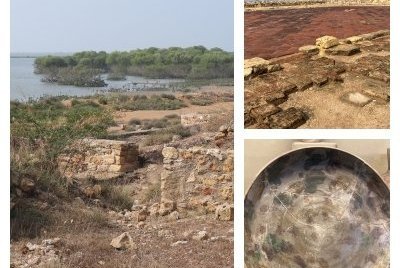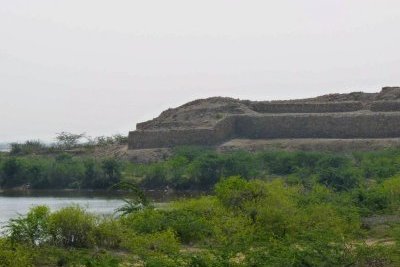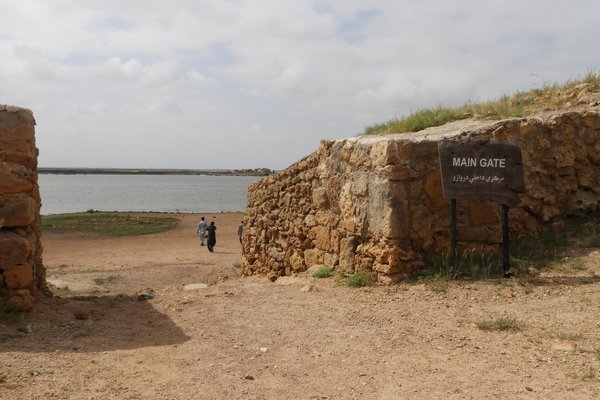Pakistan
Port of Banbhore
Banbhore is the ruined town of the medieval port of Daibul on the north bank of Gharo Creek, about 65 kilometres east of Karachi. The city was inhabited from the 1st century BCE to the 13th century CE and the remains date from the Parthian, Hindu-Buddhist and early Islamic periods. The port was abandoned when the Indus River shifted its position and the creek silted. The archaeological site includes a citadel, the remains of an early stone-built mosque and the regionâs best preserved mediaeval port.
Site Info
Official Information
- Full Name
- Port of Banbhore (ID: 1885)
- Country
- Pakistan
- Status
-
On tentative list 2004
Site history
History of Port of Banbhore
- 2023: Incomplete - not examined
- incomplete dossier
- 2021: Incomplete - not examined
- incomplete dossier
- 2004: Added to Tentative List
- Added to tentative list
- Type
- Cultural
- Criteria
Links
All Links
News Article
- March 7, 2020 ancient-origins.net — Largest Ancient Ivory Factory Discovered In Bhanbhore
Community Information
- Community Category
- Archaeological site: South (East) Asian
Travel Information
Recent Connections
-
Incomplete more than once
2020, 2021, 2023
Connections of Port of Banbhore
- World Heritage Process
-
-
Incomplete more than once
2020, 2021, 2023
-
News
- ancient-origins.net 03/07/2020
- Largest Ancient Ivory Factory Disc…
Recent Visitors
Community Reviews
Show full reviews
Pakistan hasn’t had a site inscribed since 1997, but they have been trying to submit the Port of Banbhore for a couple of years. It so far has resulted in three incomplete dossiers in 2020-2021-2023. Unfortunately, it is probably the least visually attractive site among Pakistan’s TWHS, but it will surely do good on paper.
The entrance fee is a rather hefty 1,500 rupees (5 USD), a sum that in Pakistan gets you a meal plus a side dish and a drink in a nice restaurant. The visit starts at the museum, which is fairly interesting, but our guided tour was cut short because the local guide took a phone call and was never seen after! The Lahore Museum also has good displays on Banbhore, which in medieval times was noted for its ceramics with sgraffito (photo bottom right).
The site itself needs a fair bit of walking and climbing until you reach the shore of a creek that eventually ends up at the Arabian Sea. Excavation works are still going on by combined Pakistani, Italian and French groups of archeologists. In 2020 they discovered a load of 40kg of remains of elephant tusks buried at the site, which indicates that ivory was a commodity at the time of Banbhore’s blossoming and that ivory carving was executed here on an industrial scale (the tusks came from India).
Making your way across the site, which now overall is in better condition than when Solivagant visited in 2013, you'll …
Keep reading 0 comments
Banbhore is an archaeological site of an Indus port which existed, certainly between 100BC and 1200 AD, though may go back to Alexander the Great at c325BC. The site is remote from any town and the visible excavated remains are not spectacular – just a large “tell” with some partially reconstructed city walls and, inside, a few further low walls to show the shape of some buildings and streets. No pillars, arches or decorations – you will have to use your imagination! It reminded me very much of Khor Rhori not that far away across the Arabian Sea in Oman. Both were ancient port cities with relatively few visible remains and overlooking a stretch of water – though, in the case of Banbhore this is little more than a creek today with the silting up of the Indus delta and the consequent loss of easy sea access probably being a major reason for the town’s demise
To help understand the site it is well worth starting with the surprisingly good little on-site museum from the 1960s. It contains a reconstruction of the stratigraphic sequence across 23 levels of habitation which have been uncovered since excavation started in 1958. Hindu, Buddhist and Muslim artefacts are on display showing the changing nature of the societies occupying the site. Among these are a pot clearly marked with Chinese characters showing that Banhbore was part of the silk route trading system. Banbhore is also thought (though, as I understand it, not definitely proven) …
Keep reading 0 comments
